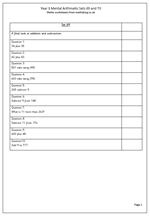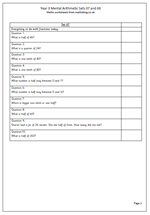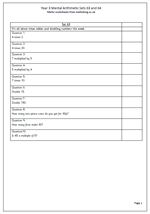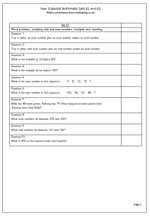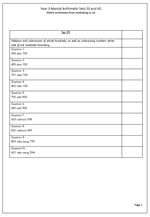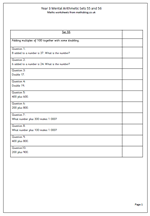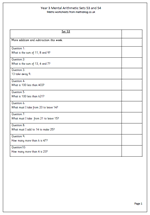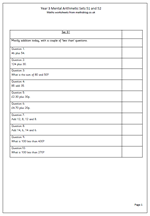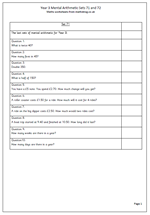 Here we have the last sets of mental arithmetic questions for year 3. The complete pack of 72 sets of ten questions can be used in 12 week blocks over the three terms, using two sets each week. Probably the most important part of this whole process is to ask how children go about answering the questions and discussing with them different approaches, some of which are much quicker and easier than others.
Here we have the last sets of mental arithmetic questions for year 3. The complete pack of 72 sets of ten questions can be used in 12 week blocks over the three terms, using two sets each week. Probably the most important part of this whole process is to ask how children go about answering the questions and discussing with them different approaches, some of which are much quicker and easier than others.
If children can answer these last two sets of questions quickly and correctly then they will be very well set up for the next year and will have a sound base on which to progress.
Questions this week include:
doubling 2-digit and 3-digit numbers
finding halves of 3-digit multiples of 10
change from £5.00
further money problems
time questions such as the number of weeks in a year.
